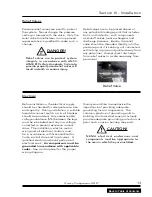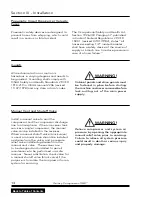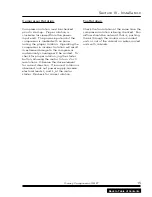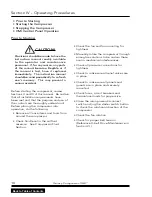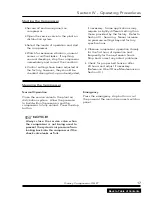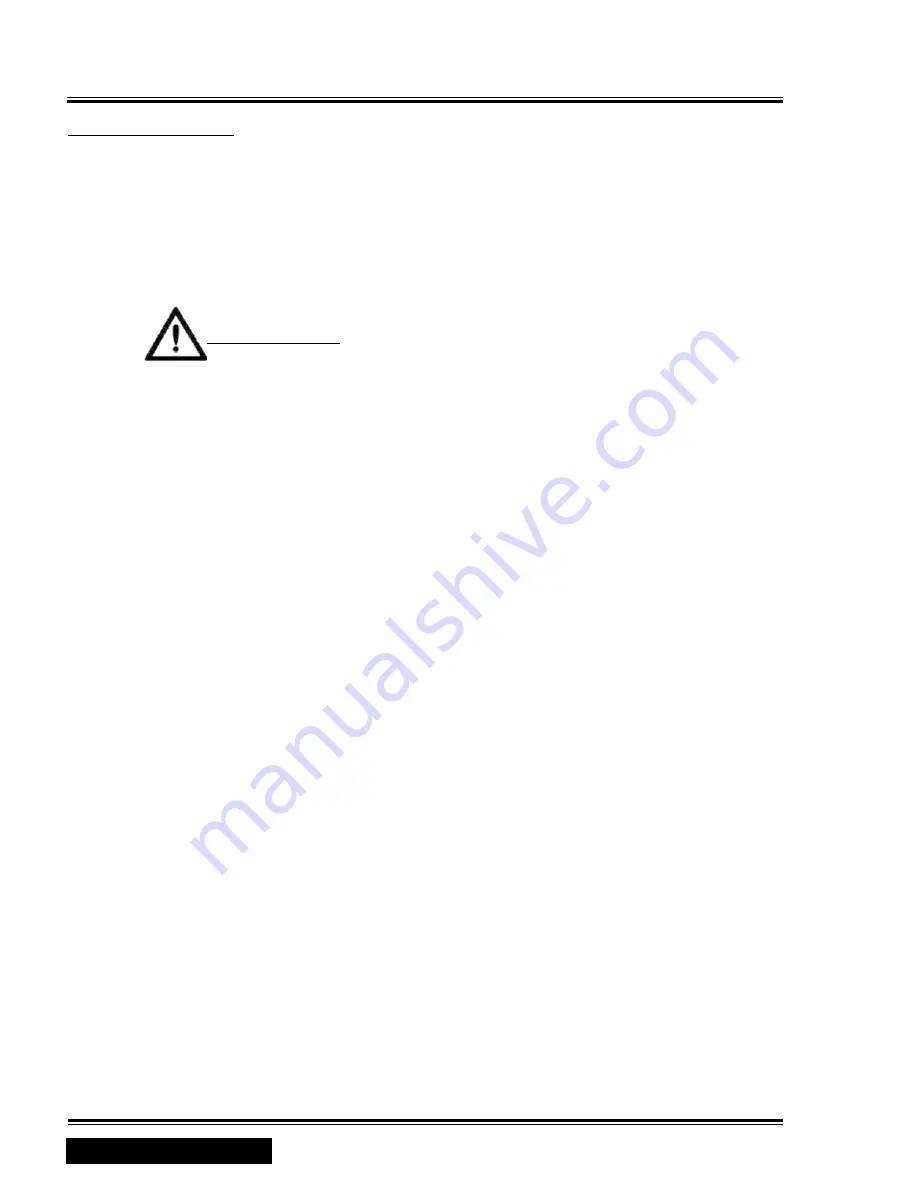
Section I - General Information
Safety Precautions
Read this manual and follow all instructions
prior to installing or operating the
compressor.
Listed below are some, but not all, safety
precautions that must be observed with
compressors and compressed air systems.
Warning!
Failure to follow any of these precautions
may result in severe personal injury,
death, property damage and/or
compressor damage.
• Air from this compressor will cause
severe injury or death if used for
breathing or food processing. Air
used for these processes must
meet OSHA 29 CFR 90.34 or
FDA2XDE78.3570 regulations.
• Disconnect and lockout all power
supplies to the compressor plus any
remote controllers prior to servicing the
unit.
• Never assume it is safe to work on the
compressor because it is not operating.
Many installations have automatic start/
stop controls and the compressor may
start at any time.
• This compressor is designed for
use in the compression of normal
atmospheric air only. No other gases,
vapors or fumes should be exposed to
the compressor intake, nor processed
through the compressor.
• Relieve all pressure internal to the
compressor prior to servicing. Do not
depend on check valves to hold system
pressure.
• A properly sized pressure relief valve
must be installed in the discharge
piping ahead (upstream) of any shutoff
valve (block valve), heat exchanger,
orifice or any potential blockage
point. Failure to install a pressure
relief valve could result in the rupturing
or explosion of some compressor
component.
• Do not change the pressure setting of
the pressure relief valve, restrict the
function of the pressure relief valve, or
replace the pressure relief valve with
a plug. Over pressurization of system
or compressor components can occur,
resulting in death, severe personal
injury or property damage.
• Never use plastic pipe, rubber hose,
or soldered joints in any part of the
compressed air system. Failure to
ensure system compatibility with
compressor piping is dangerous.
• Never use a flammable or toxic solvent
for cleaning the air filter or any parts.
• Do not remove any guards or cabinet
panels or attempt to service any
compressor part while the compressor
is operating.
• Do not operate the compressor at
pressures in excess of its rating.
• Observe control panel displays daily
to ensure compressor is operating
properly.
• Follow all maintenance procedures and
check all safety devices on schedule.
• Never disconnect or tamper with the
high air temperature (HAT) sensors.
• Compressed air is dangerous, do not
play with it.
2
Quincy Compressor-QGB
™
Back to Table of Contents

















